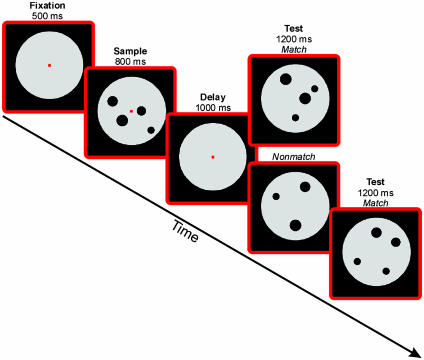Fig. 1.
Delayed match-to-numerosity task. A monkey held a lever and fixated a small fixation spot at the center of the computer monitor to start a trial. The first display (sample) was followed by a memory delay period and then a test display appeared. There was a 50% probability that the test contained the same number of items as the sample (a match). If it was a match, the monkey released the lever to receive a reward. If it was a nonmatch, the monkey continued to hold the lever until a second test display appeared, which was always a match and required a lever release to receive a reward. A nonmatch contained, with equal probability, one more or one less item, except for “one” and “five.”

